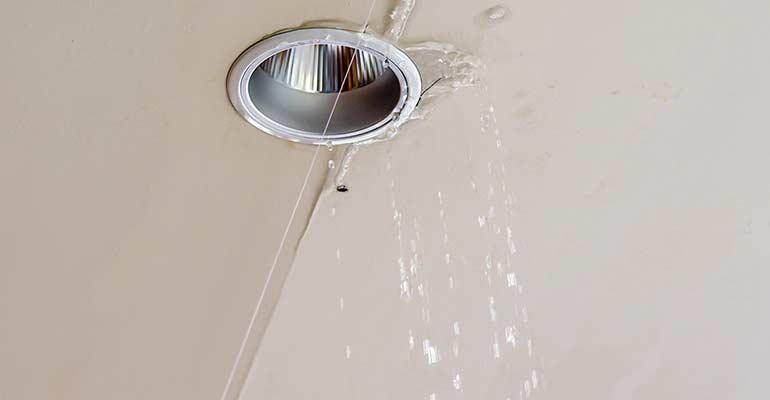Preventative Measures for the Six Most Common Causes of Water Leaks in Residential Spaces
Preventative Measures for the Six Most Common Causes of Water Leaks in Residential Spaces
Blog Article
This article which follows relating to Top Causes of Home Water Leaks is pretty much compelling. Read it yourself and decide what you think of it.

Leakages not only trigger waste of water but can additionally cause unneeded damage to your residence as well as advertise unwanted natural development. By looking as well as recognizing for daily situations that trigger leaks, you can shield your home from future leaks and unneeded damages.
Encroaching roots
Most water leaks start outside the house rather than inside it. You could observe wet patches or sinkholes in your backyard, and that might mean that tree roots are getting into water lines causing water to permeate out.
Rusty water systems
As time passes by, your plumbing system ages and corrosion such as corrosion may begin gnawing the pipelines. This might be the cause of staining or warping on your water pipes. This calls for an examination with your plumber right away. If our plumbing system is old, think about changing the pipelines given that they are at a higher threat of corrosion than the more recent versions.
Faulty Pipeline Joints
Pipe joints can wear away over time, resulting in water leaks. If you have loud pipes that make ticking or banging sounds, particularly when the hot water is transformed on, your pipe joints are possibly under a whole lot of pressure.
Immediate temperature level changes.
Extreme temperature modifications in our pipelines can create them to broaden and get suddenly. This development as well as contraction might trigger splits in the pipes, especially if the temperature are below freezing.
Poor Water Connectors
At times, a leakage can be created by loose hose pipes and pipelines that provide your home appliances. In situation of a water links leak, you might notice water running directly from the supply line or pools around your appliances.
Blocked Drains
Obstructed drains may be aggravating as well as inconveniencing, however they can often wind up creating an overflow leading to break pipelines. Keep removing any kind of materials that may go down your drains pipes that can clog them to stay clear of such inconveniences.
All the above are root causes of leakages yet not all water leaks result from plumbing leakages; some leakages might originate from roof covering leakages. All leakages must be fixed right away to prevent water damage.
Leakages not only trigger waste of water yet can likewise create unnecessary damages to your home and promote unwanted organic growth. By understanding and looking for daily situations that cause leakages, you can protect your house from future leakages and unnecessary damage. Today, we will look at 6 leak triggers that might be creating your pipelines to trickle.
At times, a leak can be triggered by loose tubes as well as pipelines that provide your home appliances. In case of a water links leakage, you may see water running straight from the supply line or puddles around your appliances.
How To Check For Water Leak In Your Home
How To Check for Leaks
The average household's leaks can account for nearly 10,000 gallons of water wasted every year and ten percent of homes have leaks that waste 90 gallons or more per day. Common types of leaks found in the home are worn toilet flappers, dripping faucets, and other leaking valves. These types of leaks are often easy to fix, requiring only a few tools and hardware that can pay for themselves in water savings. Fixing easily corrected household water leaks can save homeowners about 10 percent on their water bills.
To check for leaks in your home, you first need to determine whether you're wasting water and then identify the source of the leak. Here are some tips for finding leaks:
Take a look at your water usage during a colder month, such as January or February. If a family of four exceeds 12,000 gallons per month, there are serious leaks.
Check your water meter before and after a two-hour period when no water is being used. If the meter changes at all, you probably have a leak.
Identify toilet leaks by placing a drop of food coloring in the toilet tank. If any color shows up in the bowl after 10 minutes, you have a leak. (Be sure to flush immediately after the experiment to avoid staining the tank.)
Examine faucet gaskets and pipe fittings for any water on the outside of the pipe to check for surface leaks.
Undetected water leaks can happen without the home or business owner even realizing. If you suspect a water leak, but not able to find the source. It is time to contact a professional water leak detection service, The Leak Doctor.
How To Find a Water Leak In Your Home
https://www.leakdoctor.com/blog/How-To-Check-For-Water-Leak-In-Your-Home_AE197.html

I stumbled upon that blog entry on Common Water Leaks In House while doing a search on the web. Enjoyed reading our article? Please share it. Help other people discover it. Thank you for taking the time to read it.
Click Here Report this page